Following months of research, canvassing, and listening to community needs, journalists, including Britton Struthers-Lugo, produced solutions-based stories about the challenges faced by the Berwyn, Illinois, community.
In Part 1, Struthers-Lugo examines the issue of urban flooding, a growing concern for residents and infrastructure in Berwyn.
Murky waters cover a basement floor; the smell of sewage fills the room. Once it’s drained, the laborious clean-up process begins. This burdensome cycle is something that some residents of Berwyn, an urban suburb just outside Chicago’s southwest neighborhoods, are familiar with.
“It was one of our historic 100-year rain events. June of 2023, about 8 or 9 inches of rain,” recalls Joshua Bowman, one of Berwyn’s newly elected Aldermen. “That’s what had FEMA come knocking on our door. You had people with feet of water in their basements. Cicero was hit really hard. Berwyn, as well. And people were just wrecked.”
The flooding event in June 2023 was one of the most severe flooding events Berwyn had seen in over a decade (previously, 2012 was the last federally declared flood disaster in the area). However, floodwater has not disappeared entirely from the streets or homes in Berwyn; as patterns of severe weather increase, climate experts predict that flood levels will continue to rise.
What is the problem?
Urban flooding, or excessive water that accumulates in developed areas, is a growing concern for residents and infrastructure in Berwyn, Illinois.
According to the Natural Resources Defense Council, urban flooding is caused by rain that falls on non-porous surfaces (think concrete, asphalt, and other water-resistant materials) that inundate the local stormwater, sewage, and drainage systems. It is linked to urbanization and outdated stormwater infrastructure, and unfortunately, as extreme weather events occur more frequently across the U.S., climate scientists foresee urban flooding as an increasingly significant problem.
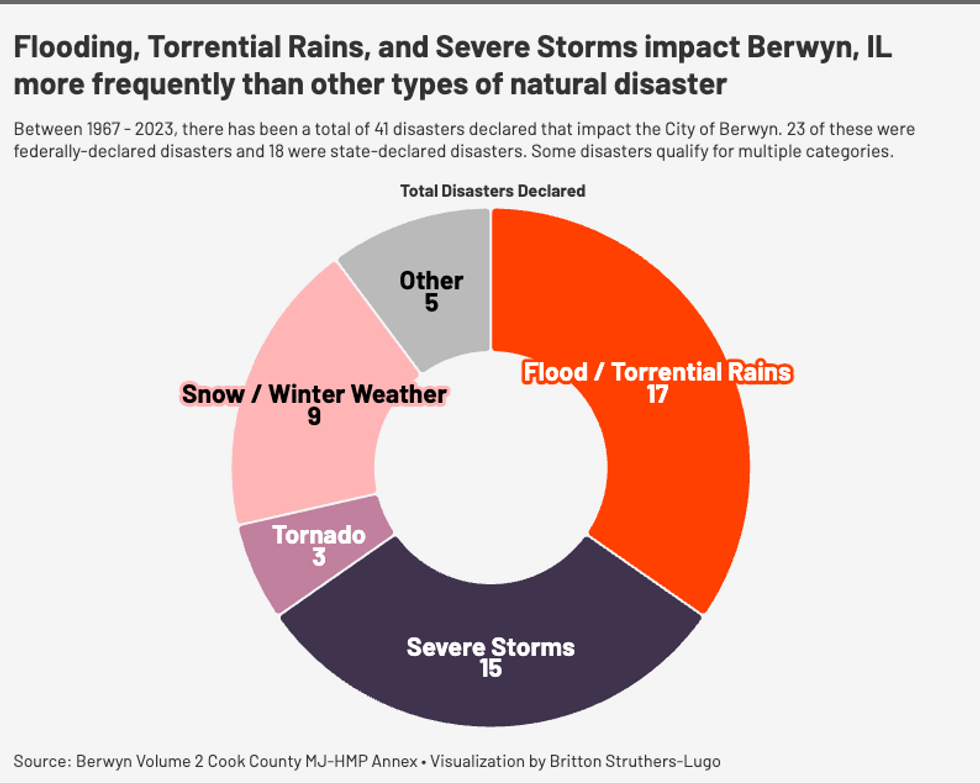 Berwyn Volume 2 Cook County MJ-HMP Annex
Berwyn Volume 2 Cook County MJ-HMP Annex
“We’re going to continue to see increasingly more severe rain events, just like the one we saw in July 2023,” said Climate Resilience Program Lead at the Chicago Metropolitan Agency for Planning, Kate Evasic. According to Evasic, Chicago needs to be aware of these climate concerns and prepare the city infrastructurally, “so that we’re able to withstand not just the storms that we’re experiencing today, but the storms of the future.” However, tackling Chicago-land’s century-old sewage system is no easy feat.
One of the main culprits for urban flooding throughout the greater Chicago area, as is the case in Berwyn, is the city’s combined sewer system. A combined sewer system is one where the sanitary sewage and stormwater use the same lines to flow out to the city’s water reclamation plants.
According to the Metropolitan Water Reclamation District of Greater Chicago, “Most of these local sewers are required to carry much more water today than they did when they were first put into service, and as a consequence, they can exceed their flow capacity, causing backups.”
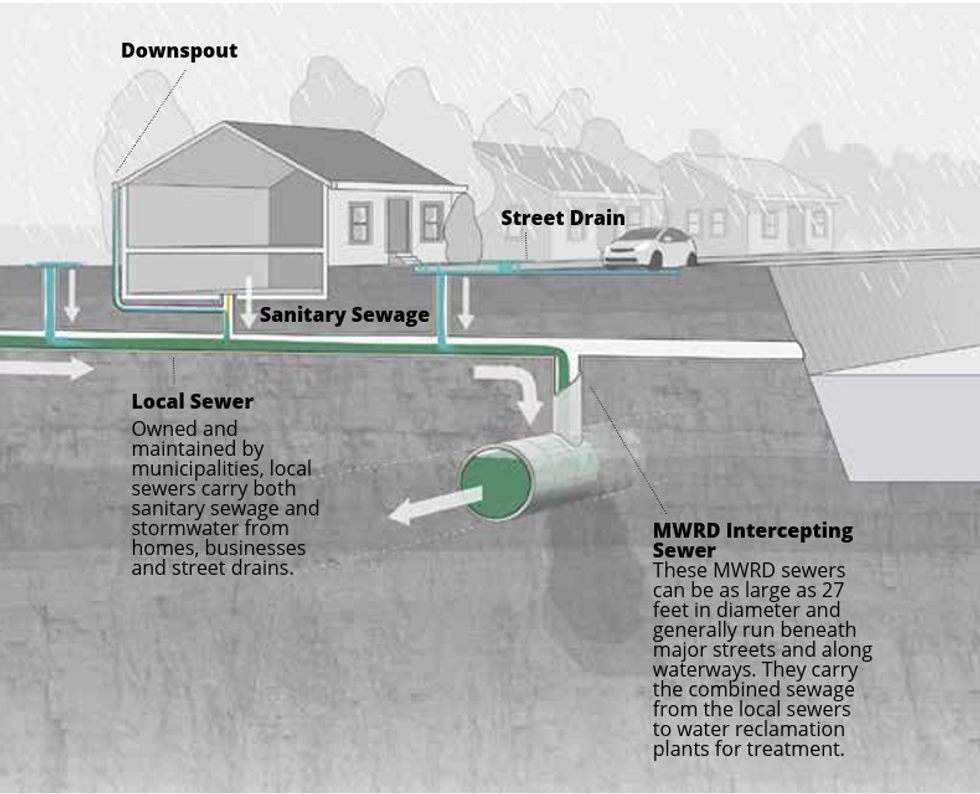 Metropolitan Water Reclamation District
Metropolitan Water Reclamation District
Provided by the Metropolitan Water Reclamation District, this chart illustrates what a combined-sewer system looks like in the Greater Chicago area. Source: MWRD
These backups, often riddled with sanitary hazards, remain stagnant in the streets or drain into people’s homes.
“When you have flooding, especially if it's in a combined sewer, then you have the extreme health concerns related to raw sewage in your flood water. But then there's also all kinds of contaminants on our roads and on other properties,” said Evasic.
Aside from being frustrating to deal with and potentially expensive to repair, these rising waters pose a real health risk to those who experience them.
How residents are impacted
“It’s kind of a horrifying thing,” said Alex McKinley, Berwyn resident and volunteer at the Berwyn Tree Canopy Initiative, who has dealt with flooding in his home multiple times over the past few years.
“The first time it happened,” McKinley recounts, “I was in the basement and I was tipped off by a horrid smell, which was the sewer gas being forced up the drain. And then, sure enough, it started pouring out in the laundry room.”
Berwyn resident and 1st Ward Alderman-elect Micah Caldwell has also been subject to the frustrations of basement backups and urban flooding in Berwyn. Caldwell recalls one incident that occurred shortly after he and his wife moved into their new home in 2021:
“We probably had about 3 inches of water and sewage that was coming from the sewer line. You know, it wasn't seepage. It was coming from the sewer line that was just going straight into our basement.”
Caldwell said that his basement has flooded two more times since that first incident. Aside from first-hand encounters, flooding reports illustrate community members’ frustration with water invading their homes and their inability to control the flow.
A resident who lives along Wesley Avenue reported 4-6 inches of rain in their basement at the end of January:
“The only time we have this unpleasant and unhealthy problem is when the City of Berwyn main sewer line is full and outflow from our property has nowhere to flow but to back up into our basement,” the report reads.
“We are continuously experiencing this problem, RAIN OR SHINE. We feel as we are the City of Berwyn's watchdog of this problem as once we report the backup in our basement, Public Works comes, drains the main and outflow from our property is resolved. This is not a permanent solution and request City of Berwyn PERMANENTLY fix the problem that exists with the main sewer line as it is evident that the only time we have such unpleasant backups in our basement is when the main sewer line is full.”
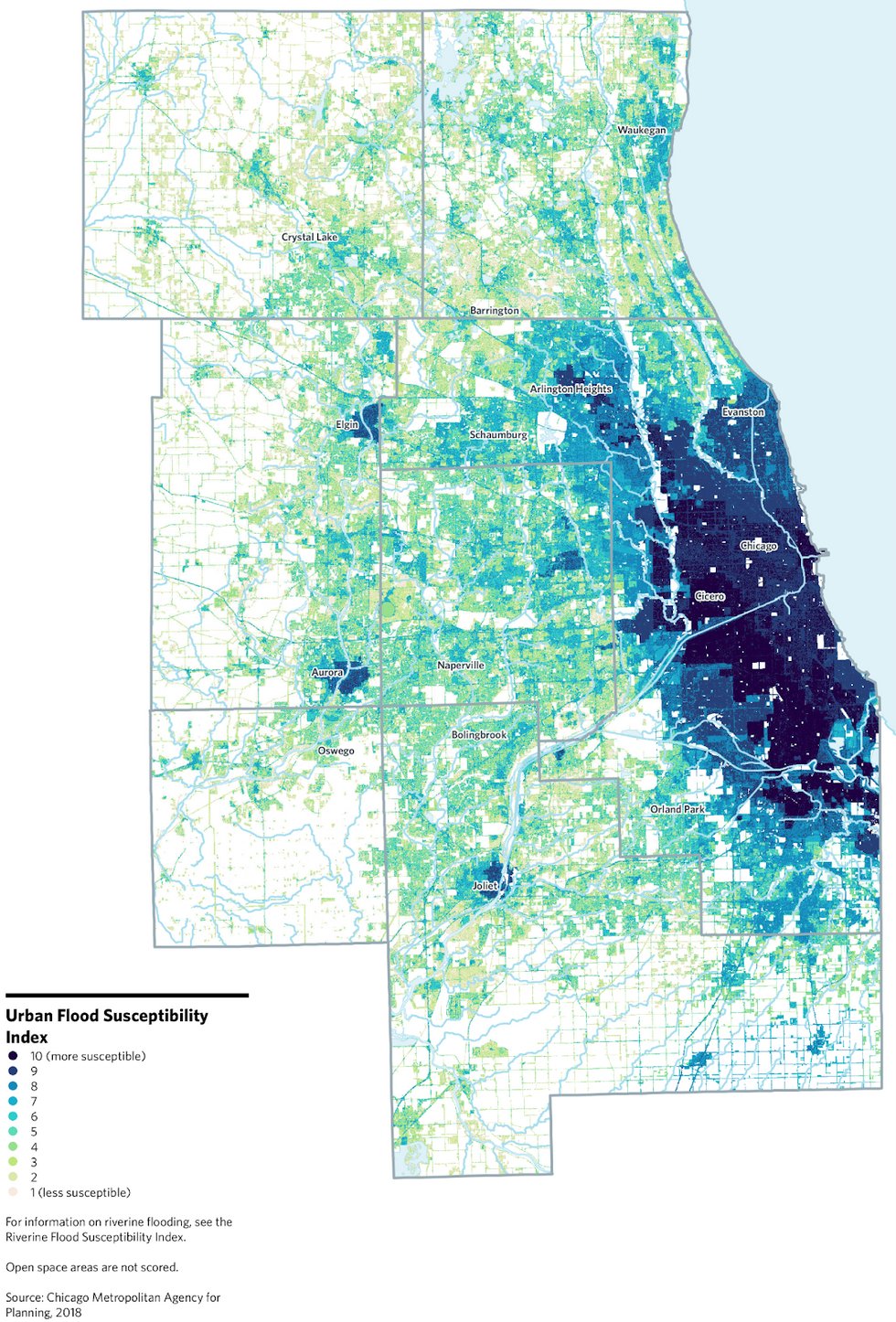 Chicago Metropolitan Agency for Planning
Chicago Metropolitan Agency for Planning
This is the Urban Flood Susceptibility Index created by the Chicago Metropolitan Agency for Planning. According to Kate Evasic, the index identifies “areas of the region that are more susceptible to urban flooding based on a history of past flooding claims and then different characteristics of those places.” Berwyn (left of Cicero) ranks among the most susceptible communities in Northeast Illinois. 2018.
Residents’ frustration is clear; the problem is visible and persistent. However, a permanent solution would most likely require modernizing the entire sewage and stormwater drainage system in Cook County.
“What's said a lot in stormwater is that there's no silver bullet that's going to solve these flooding issues,” said Pedro Ortiz, a Senior Civil Engineer with the MWRD.
Financial restraints, in addition to the burden of time, are both reasons why a one-stop-shop solution is very unlikely in the near future.
“Everyone knows that the needs far outweigh the money that's available,” said Evasic, “So that's why I think that we're not going to be able to build our way out of this problem.”
Rather than look for permanent solutions, said Evasic, “the shifting goalposts of climate change really mean that we have to figure out what it's like to live with flooding as a continuous threat, but try to reduce the losses as much as we can.”
So, how can the City of Berwyn best prepare to weather the storm?
In Part 2, Struthers-Lugo investigates the many approaches that Berwyn’s local government can take to mitigate urban flooding for its residents, including green alleys.
Look for the conclusion to the story on Monday, June 9.
This story is made possible through the Berwyn Collaborative: Understanding Community Needs, led by News Ambassadors in collaboration with local news outlets, including Illinois Latino News, click HERE.
Britton Struthers-Lugo is a reporter with the Medill News Service at Northwestern University, a freelance journalist, and a photographer.
The Fulcrum is committed to nurturing the next generation of journalists. Learn how by clicking HERE.




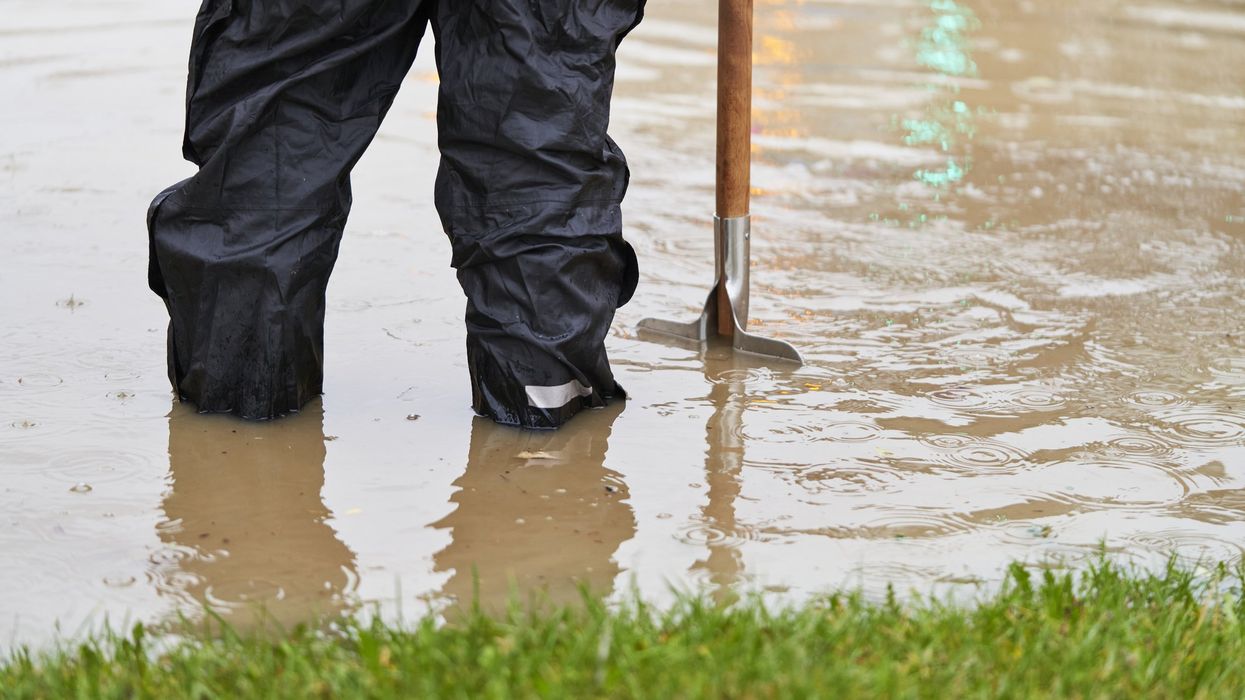



















 Source: Corporate Pero Latinos
Source: Corporate Pero Latinos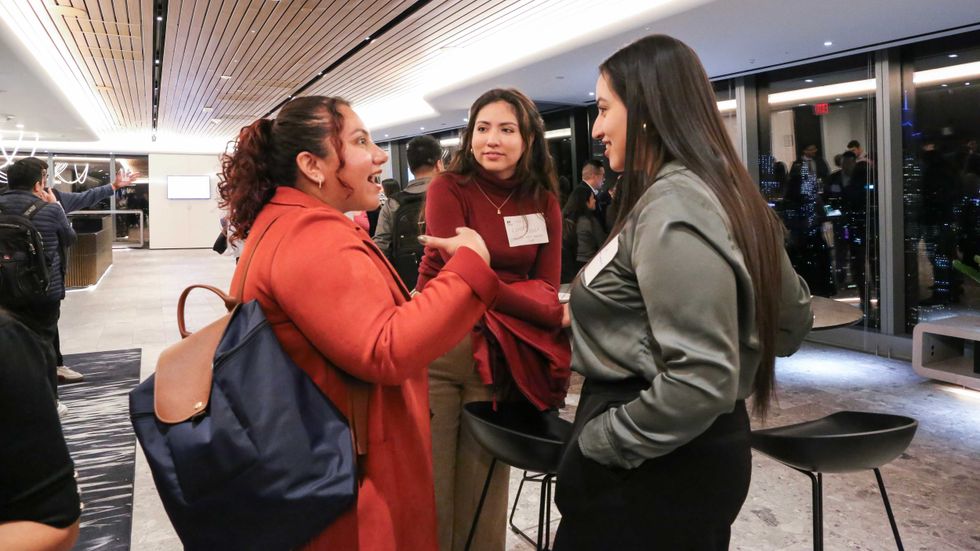 Source: Corporate Pero Latinos
Source: Corporate Pero Latinos Source: Corporate Pero Latinos
Source: Corporate Pero Latinos